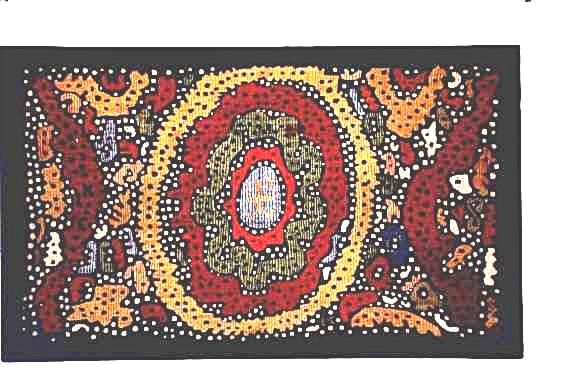sprice@hsc.vcu.edu
Dear People, In the thread, "Smug Simurgh", Michael Wendorf raised some
questions about the ground cloths on which Kaitag embroideries were
embroidered. First, are they pieced or all one piece of cotton cloth? Most
of the embroideries in Chenciner's book are made on ground cloths that
consist of 2 to 7 pieces of cotton cloth sewn together to make the
approximately 3'6" x 2'6" item. Of the 5 examples I used in the Salon, the
Herrmann piece and the older of the two in Chenciner's book are sewn, the
one from HALI and the younger of the two from Chenciner's book are all one
piece, and I don't know what the structure of the one from ORIENTAL RUG
REVIEW is. I have no idea whether any significance should be attached to
this aspect of their structure, but I suspect there is none. As a point in
passing, Uzbek suzani typically are made by sewing together pieces, each
piece being embroidered separately (sometimes not all by the same
embroiderer) and then joined. The Kaitags that are made from sewn pieces
of cotton all seem to have been embroidered after the joining of the
pieces, not before it. That is, there are no discontinuities in design at
the points where the pieces of ground cloth come together, as there often
are in suzani. Second, Michael notes that there are Kaitag embroideries
with different colors of ground cloth. The most common is white or ivory,
but some are done on indigo, some on red and a few on other colors.  This one, shown in an earlier
Salon, is an example of one on an indigo ground cloth. I doubt that there
is any particular significance to the color of the background, although
the background and spots of white in this one does suggest stars in a
night sky. Steve Price This one, shown in an earlier
Salon, is an example of one on an indigo ground cloth. I doubt that there
is any particular significance to the color of the background, although
the background and spots of white in this one does suggest stars in a
night sky. Steve Price |
 This one, shown in an earlier
Salon, is an example of one on an indigo ground cloth. I doubt that there
is any particular significance to the color of the background, although
the background and spots of white in this one does suggest stars in a
night sky. Steve Price
This one, shown in an earlier
Salon, is an example of one on an indigo ground cloth. I doubt that there
is any particular significance to the color of the background, although
the background and spots of white in this one does suggest stars in a
night sky. Steve Price